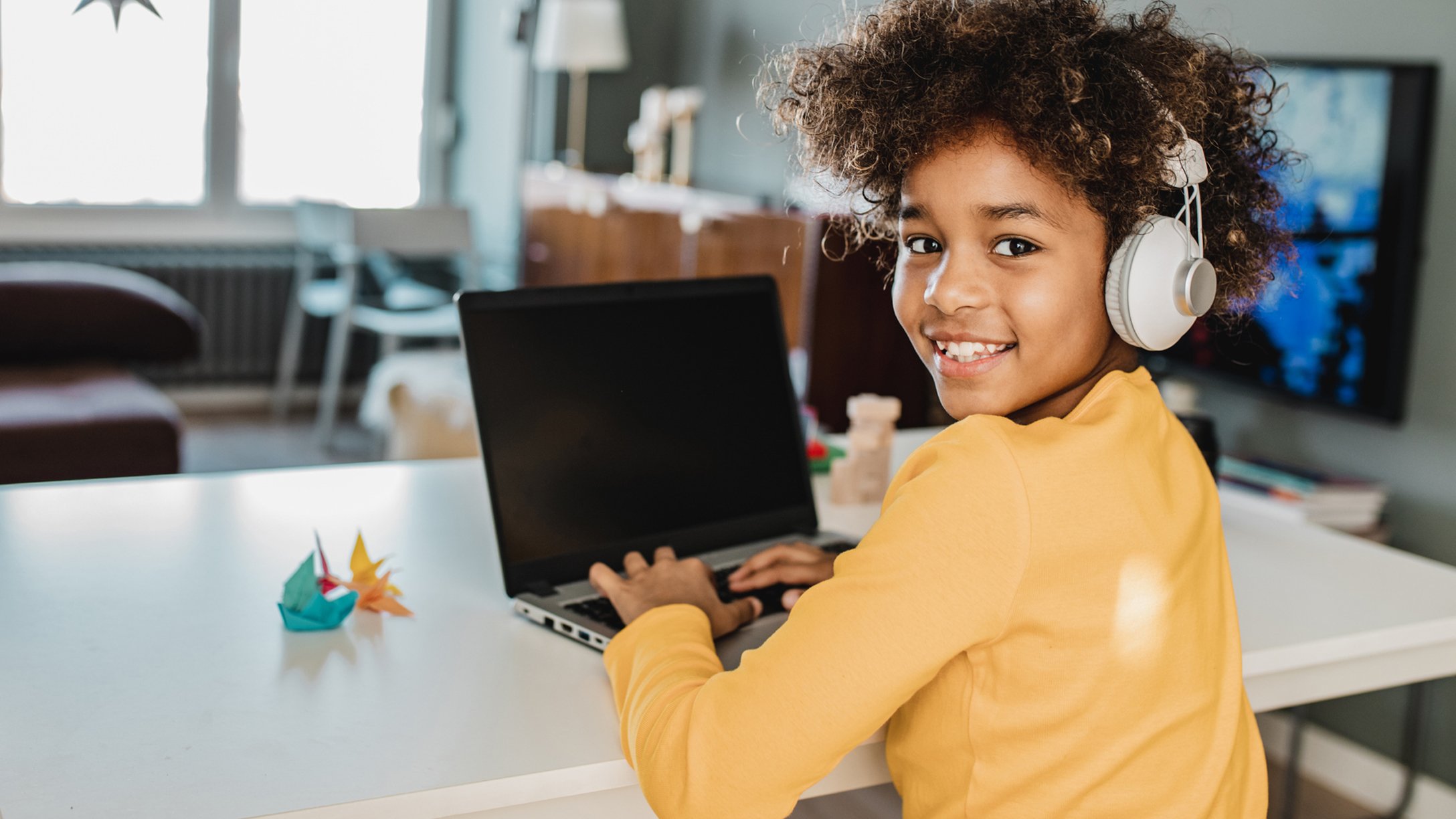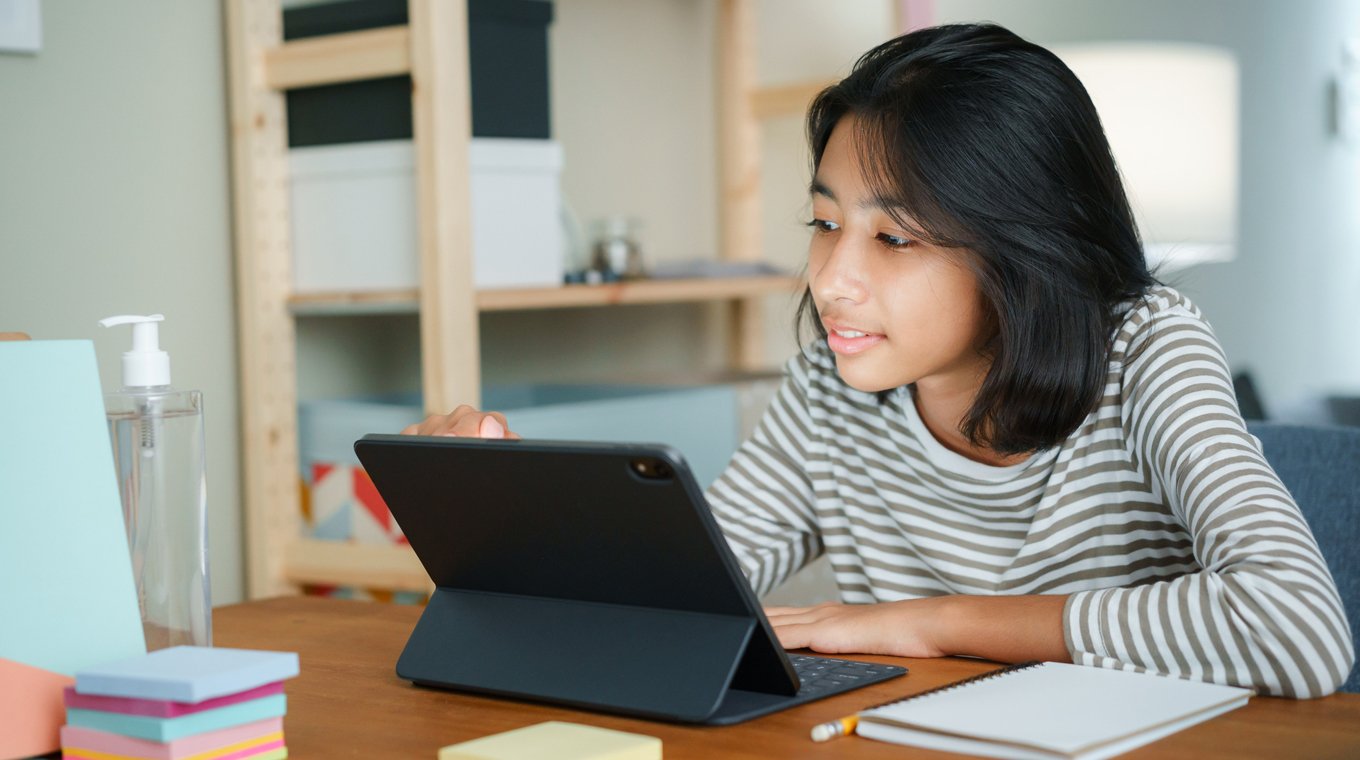
In this article
So, you’ve settled into the idea that your child will be virtual learning for the foreseeable future. You’re in good company. According to a national poll, 40% of American families are planning to this year.
“If this poll holds true, that would mean 8.5 million American children would be homeschooled in the fall. It’s hard to believe,” Mike Donnelly, senior counsel and director of global outreach for the Home School Legal Defense Association, told the Connecticut Examiner.
So if this is truly the case, for many families the next inevitable step is figuring out how to set up a classroom at home to ensure your child has everything they need to be successful. It’s easy to get caught up in creating the perfect space — many of us spend too much time scrolling Pinterest for ideas for classroom inspiration. Usually though, simplicity and functionality will win out every time. If your child will be learning from home this school year, here are 7 things to keep in mind to help you set up a great home classroom.
Things to consider before you set up a classroom at home

Remember that comparison is the thief of joy. You may have spent the summer months perusing homeschool classroom setup ideas on Pinterest or swooning over beautifully curated Instagram homeschool accounts. It’s easy to get caught up in scrolling through boho-style kids’ classrooms on the internet. You know the ones; light airy spaces with monstera plants scattered in each corner haloed by a golden sun spilling out onto a reclaimed hardwood floor.
These images can make you want to throw your whole house away and start over. Take inspiration from what you see, but don’t get caught up in recreating the perfect virtual learning classroom. It’s ok to admire from afar and do what works for your space, even if that means just setting up a quiet corner for your child to work in.
1. Consider the space you have.
So, once you understand what you can’t do with your homeschool classroom space, take into account the space you do have and think about how you can create a functional learning space for your children. Figure out what ideas for a classroom space fit your lifestyle, implement those and disregard the rest.
2. Determine your budget and set a spending limit.
You don’t need to go out and buy all of the things when setting up a homeschool classroom. Chances are you already have everything you need. If you do happen to have a budget, set a spending limit, especially if you’re not sure whether your kids will go back to in-person classes soon. Start small and add items as your child’s’ needs grow or change. Don’t overspend in the first month.
“Resist the temptation to buy everything and complete every set, especially if you’re a completist, you don’t know what you or your kids will like,” homeschooling mom of four Virginia Duan told Mom.com.
3. Be flexible and willing to wing it if necessary.
You never know how your space will evolve over time. When I began homeschool preschool with my youngest, I set up a dedicated homeschool room, complete with posters on the wall and various learning stations. Recreating a school at home was one of my biggest mistakes. My son preferred cuddling up on the sofa to read or playing in the sand and water table on the back patio. A homeschool room was a waste of space, time, and money. Hold off on investing in supplies until you’re more familiar with your child’s learning style.
Must-haves for the perfect classroom at home

There are a few necessities that you might need when setting up your virtual learning environment. Make sure to inquire with your school to see which items they may be providing — many are providing students with digital devices and software.
4. Create a designated space for online classes.
“If you are in a position to have a designated desk or table where ‘school happens,’ that is ideal,” Sal Khan,founder of and CEO of Khan Academy, told the Washington Post. “Ideally, it’s in a different place from where kids sleep or play video games or watch TV. And when they use that space, they pretend like they are going to school.”
For some students, a space dedicated solely to online learning can help the transition from regular life to ‘school time’ easier. It can be a separate desk away from a bedroom, playroom or living area, or even just a special spot at the table. “When they want to play or goof off a little bit or take a break, they leave that space,” Khan said. “The more that you create associations with that space and focused work and learning, the better.”
5. Start off on the right foot with the proper equipment.
There are a few must-have items that make for an organized classroom. Noise-canceling headphones and blue-light filtering glasses will make your child more comfortable. Keep a lap desk on hand for added flexibility in learning location.
Anitra Durand Allen is the mother of a middle schooler, a high schooler, and college student. She shared her list of additional virtual learning supplies that will help make for a positive homeschool year experience for her family.
- An adjustable computer stand to ensure their cameras are eye level and their posture isn’t wrecked leaning over the screen.
- Orthopedic chair supports since they are basically sitting for hours at a time.
- Camera lens covers to protect their privacy when not streaming.
- A ring light for my performing arts kid who has to do auditions and dance classes virtually.
Set up a great classroom that works for your needs

Remember to keep your child’s needs in mind, and create an environment that works for them and your family.
6. Personalize the homeschool space to your child’s tastes.
Every child is different. They all learn differently and have different preferences in terms of decor and style in their personal homeschooling space. Tailor your child’s learning space to their specific needs and let them have a say in where they feel most comfortable doing their work.
“As the boys grew they wanted to find corners of space throughout the house. Our new to us home is under partial construction. Boys each have a milk crate to hold their work,” said homeschooling mom, Laura Canada Oneill. “I have one to hold teacher manuals and other things I need. My youngest son and I do work at the dining table. The high school senior works near his computer.”
7. Have realistic expectations.
A great homeschool classroom is one that works for your child’s’ needs. It isn’t necessary to have a separate “school” room or expensive gear and supplies. Be honest about the space you have and your budget. This will help you create a realistic learning space that works for as long as you need it to, and will enhance your child’s virtual learning experience without putting a strain on you and your family.







